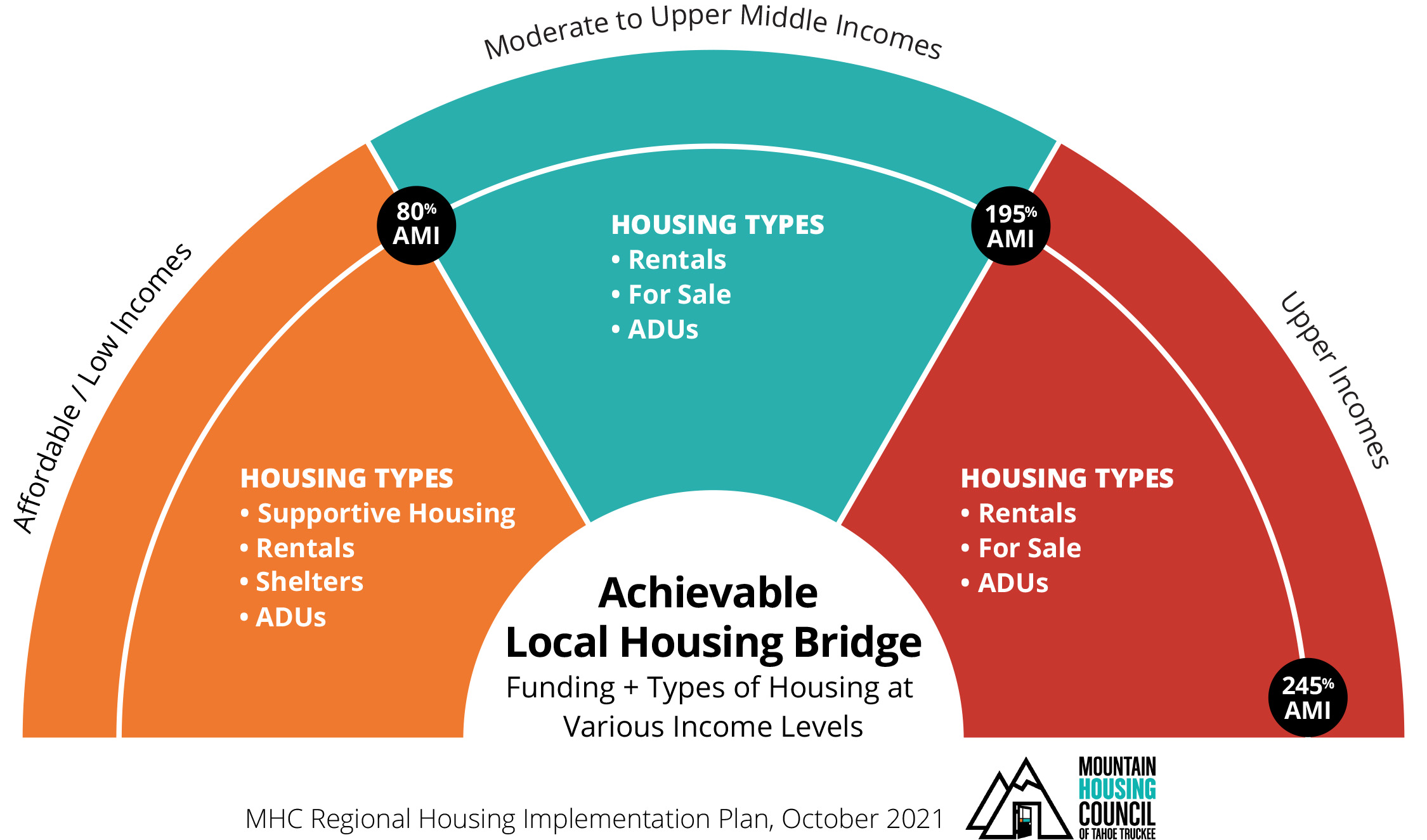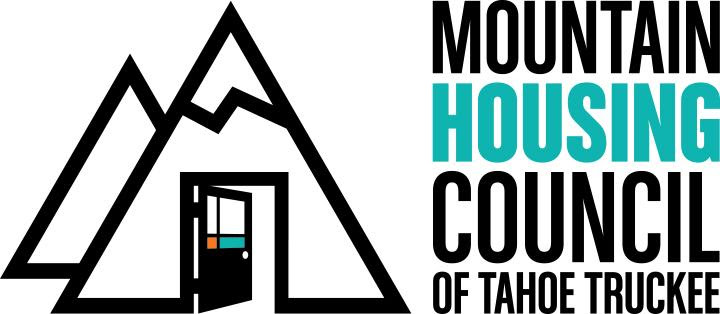Achievable Local Housing
Achievable Local Housing is a framework developed by the Mountain Housing Council (MHC) in 2017, and refined in 2021, to define the range of unmet housing needs in the region from homeless to include middle-income salary earners, the “missing middle”. An expanded definition of affordability will improve our region’s ability to address the housing needs for a diversity of households.
Read the Achievable Housing Definition adopted in 2021
Read the full 2017 Achievable Local Housing Policy Brief
Achievable Local Housing Bridge
The Achievable Local Housing Bridge is a graphic developed by MHC to show the range of housing needs in the North Tahoe-Truckee region. The spectrum of needs, as seen below, ranges from those having no income (i.e. homeless) up to upper-middle income earners. Since market forces and area median income change frequently, the upper limit of Community Achievable Housing is tied to an annual housing needs assessment. The goal of this framework is to catalyze local conversations and innovations to serve housing needs across the spectrum, including areas where state and federal funding fall short.
Federal and State Programs for Achievable Housing
The majority of federal and state subsidy programs only provide financial support for housing programs that serve households earning no more than 80% AMI. There are few to no state or federal programs for the middle to above moderate income level households, making it more difficult to finance new housing for middle-income salary earners.

Federal + State Programs for Affordable Housing
Low-Income Housing Tax Credit Programs
Tenant-Based Rental Assistance Programs (U.S. Department of Housing and Urban Development (HUD) Housing Choice Voucher Program)
Project-Based Rental Assistance Programs
Federal + State Programs for “Missing Middle” Housing
CSCDA Community Improvement Authority (CSCDA CIA)
MHC’s Housing Needs Assessments
2023 Truckee North Tahoe Regional Housing Study Update

